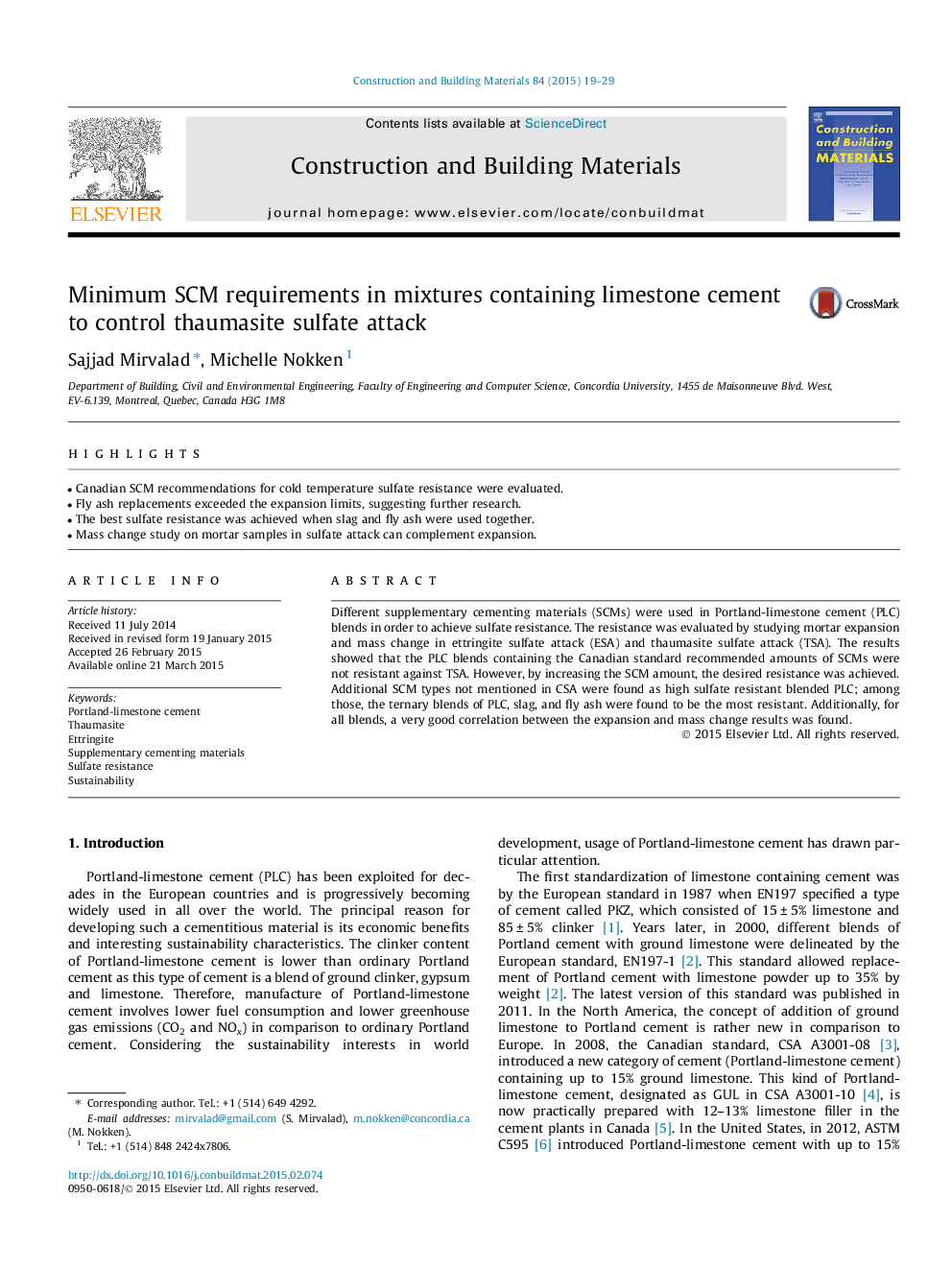| Article ID | Journal | Published Year | Pages | File Type |
|---|---|---|---|---|
| 257036 | Construction and Building Materials | 2015 | 11 Pages |
•Canadian SCM recommendations for cold temperature sulfate resistance were evaluated.•Fly ash replacements exceeded the expansion limits, suggesting further research.•The best sulfate resistance was achieved when slag and fly ash were used together.•Mass change study on mortar samples in sulfate attack can complement expansion.
Different supplementary cementing materials (SCMs) were used in Portland-limestone cement (PLC) blends in order to achieve sulfate resistance. The resistance was evaluated by studying mortar expansion and mass change in ettringite sulfate attack (ESA) and thaumasite sulfate attack (TSA). The results showed that the PLC blends containing the Canadian standard recommended amounts of SCMs were not resistant against TSA. However, by increasing the SCM amount, the desired resistance was achieved. Additional SCM types not mentioned in CSA were found as high sulfate resistant blended PLC; among those, the ternary blends of PLC, slag, and fly ash were found to be the most resistant. Additionally, for all blends, a very good correlation between the expansion and mass change results was found.
